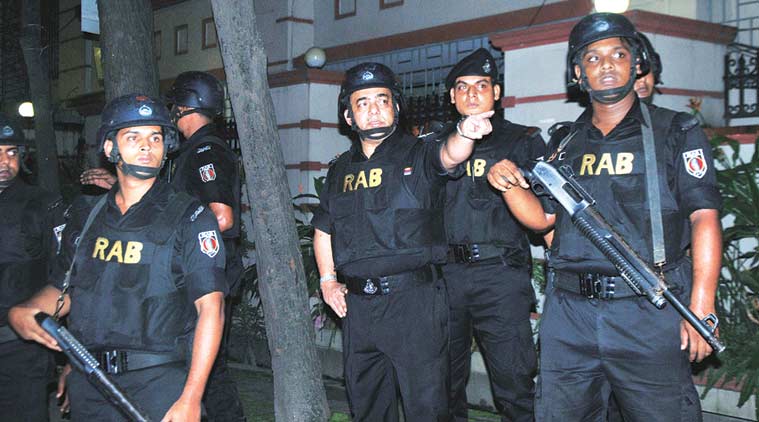“Aamra aatonke chhilaam (we were living in fear),” says Aabir, as talks about Friday night from behind the grilled doors of a house in lane number 78, next to the one where 20 hostages were killed in a terror attack through Friday night. He lives in a palatial house in the most affluent neighbourhood of Dhaka, secured with security guards, high-walls, pointed iron grills.
His house is barely 100 yards from the Holey Artisan Bakery, which saw the carnage.

Maudood, who does not wants to open the doors of these high-walled houses, recalls what happened on Friday night.
“We were offering namaaz at about 8 pm… and there were sound of firing… these explosions were deafening,” he said.
“This area is full of foreigners, embassies and politicians’ houses… I wonder how did this happen here,” Ibrahim, a Dhaka metropolitan policeman said.
[related-post]
Watch Video: What’s making news
Abir, Maudood and Ibrahim are all voices from the plush, leafy neighbourhood, Gulshan — where the affluent live and for years now, they have built high walls and feel safe in the neighbourhood.
But, that feeling of safety in this elite neighbourhood broke on Friday night and Bangladeshis are finding it hard to cope with the new reality.
Story continues below this ad
If one end of the lane no. 79 was home to the Holey Bakery, about 300 metres from the spot was BNP leader Khaleda Zia’s residence and the Italian embassy.
In the next lane, are embassies of Iran and Kuwait. A policeman on Saturday stood guard, with loaded rifles, outside these lanes. Another opposition leader, Raushan Ershad, also lives within a kilometre of the cafe.
Within a kilometre radius, Australian High Commission and the Indian High Commissioner’s residence are also located, so is the Pakistan High Commission.
This quiet, leafy neighbourhood of Gulshan, old-timers say, was founded as a planned model town in 1961 with its own municipal corporation.
Story continues below this ad
The area was originally built with the purpose of being solely residential, however, over the years many commercial buildings have been set up. Gulshan is now a mix of a serene residential area and also a city centre with shopping malls and commercial buildings.
The diplomatic community has made Gulshan its home, and at least two dozen embassies are located in the neighbourhood.
But, the peace and quiet of the neighbourhood was shattered on Saturday morning, as Bangladesh army moved in tanks to take on the terrorists at an early morning commando operation. Marks of the tank’s movement are visible on the road, which does not have potholes otherwise.
And guarding lane number 79 in the neighbourhood stand about 50 policemen, who are lamenting at the state of affairs.
Story continues below this ad
“It was just like Mumbai 26/11 attack,” Moshiur, who is not allowing anyone to go inside the lane since investigators are still examining the “spot”.
One of the policemen says, “We never thought that this area can see such an attack, it just means that some of these extremist elements have developed such deep-roots in Bangladesh. It is our job to not let people live in fear.”
Aabir, who spent Friday night in fear, is still inside his high-walled house.

 Officers direct people away from the attack site on Friday night. (Express Photo by Tapan Dey)
Officers direct people away from the attack site on Friday night. (Express Photo by Tapan Dey)






























